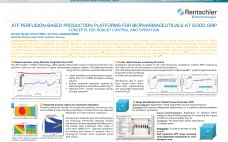Host cell proteins (HCPs) can be present in significant amounts in biological products through copurification with a recombinant protein-drug substance. Purified active ingredients developed for human use must be free of all contaminants — including residual HCPs — to minimize the incidence of immunogenicity against a drug product or its trace contaminants (1). HCP assays allow for monitoring host-related impurities during product development and process development. Most are in the enzyme-linked immunosorbent assay (ELISA) format for detecting…
Expression Platforms
How an Obscure Asian Rodent Took Over Biotechnology
The earliest domestic rodents were cavies (“Guinea pigs”) kept as food animals in the Andes since 5000 BC (as shown by mummified cavies) and carried to Europe in the 16th century (Elizabeth I had one as a pet). Although rats weren’t domesticated until the mid-19th century (a byproduct of the blood sport of rat-baiting), mouse selection and breeding began many centuries earlier. Selection of unusually colored mice was first documented ~1100 BC in China, and breeding such “fancy” mice as…
A Decade of Animal Cell Culture
Eukaryotic cells are fragile and finicky, requiring very specific culture conditions and nutrients to survive, grow, and be productive in an ex vivo environment. Even so, they have become vital to the biopharmaceutical industry’s ability to make complex biological products — overtaking yeast as a production system around 1990 and surpassing bacteria in the number of associated product approvals five years later (1). Since then, they have become even more useful, expanding their reach into the vaccine world. Mammalian cell…
Strategies for Rapid Production of Therapeutic Proteins in Mammalian Cells
It is estimated that hundreds of new recombinant proteins and monoclonal antibodies (MAbs) enter preclinical and clinical development each year (1, 2). Concomitant global competition in biologics manufacturing has put immense pressure to shorten the time to market. Over the years, cells from various origins have been used for therapeutic protein production (2, 3,–5). One of the most economical choices is Escherichia coli, used to make proteins such as human insulin and growth hormone. But the bacteria have some serious…
Development of a Plant-Made Pharmaceutical Production Platform
Since the late 1980s, studies have shown that plants can manufacture functional transgenic pharmaceutical compounds. Advantages attributed to plant-made pharmaceutical (PMP) approaches are compelling, and PMP production continues to attract interest from investors and the biopharmaceutical industry (Table 1). Proposed PMP benefits include proven scalability, high production capacity, limited exposure to human or animal pathogens, lower capital expenditures (CapEx), and decreased operating costs. Those putative advantages have proven to be significant business forces driving continued investor support for PMP ventures.…
Noninvasive Optical Sensor Technology in Shake Flasks
In process development, appropriate scaling is important to achieve acceptable product quality without compromising titer (1). Scale-down approaches involve matching the oxygen transfer coefficient (kLa) value, impeller tip speed, power per unit volume, or mixing time to those of a bioreactor (2). Bench-top bioreactors are typically used in bioprocess engineering as scale-down models of commercial units in fermentation and cell culture because of their similarity in geometry (H/D ratio) and mechanical properties (agitation type and sparging). By contrast, shaking culture…
Rapid Production of Functional Proteins of a Combinatorial IgG Library in CHO Cells
Recombinant DNA (rDNA) technologies provide a wide range of tools for producing a broad array of recombinant proteins. Since the early 1970s, the biotechnology industry has harnessed those tools — together with genetic engineering and genomics — for developing new classes of innovative and effective therapeutic molecules. The therapeutic recombinant protein market segment now represents the core of the medical biotechnology industry, with hundreds of companies involved in discovery, development, and marketing. Although recombinant technologies are extremely powerful tools, significant…
Differential Cell Culture Media for Single-Cell Cloning
Recombinant therapeutic protein production using cell culture systems is a US$70 billion market. Most biotherapeutic proteins, including monoclonal antibodies (MAbs), are produced in Chinese hamster ovary (CHO) cells, which can generate the posttranslational modifications required for full biological function. Single-cell cloning is an important step in generating homogenous recombinant protein-producing mammalian cell lines. Recent advances in media development technologies have enabled limiting dilution cloning (LDC) and protein production in a serum-free environment to meet regulatory requirements. LDC…
Efficient Production of Recombinant Antibody Derivatives in Pseudomonas flourescens
P. fluorescens serves as an attractive expression host for the production of stable and biologically active antibody fragments. A proprietary strain of P. fluorescens has been specifi cally developed as a protein production platform to enable rapid identification of strains capable of expressing high titers of soluble, active protein, and refl ects the additional sophistication required of engineered antibody derivatives being developed today. PfÄ“nex Expression TechnologyTM employs a toolbox of defined P. fluorescens strains containing custom-designed combinations of genetic elements…
ATF Perfusion-based Production Platforms for Biopharmaceuticals at Good Grip – Concept s for Robust Control and Operation
Continuous Perfusion is comparatively unpopular rather than considered as a first choice production platform for complex biopharmaceutical glycoproteins. Major concerns that have been addressed are mainly related to risk of process failure during long-term operation, complexity and scalability of cell retention devices, supply and definition of consecutive lots and, finally, handling of continuous harvests in downstream processing. We have cleared-up these stereotypes and designed a robust modular perfusion-based production platform for biopharmaceuticals demanding highest quality at industrial scale. Main components…


